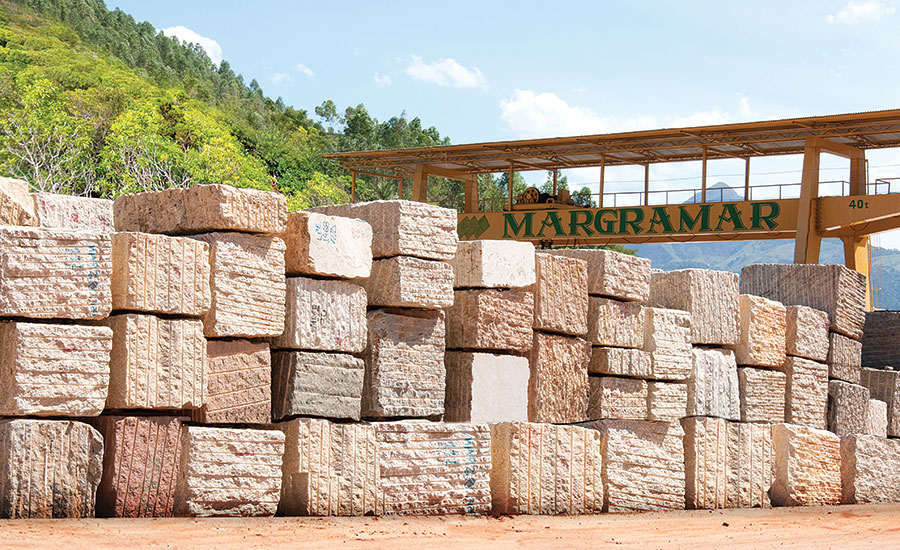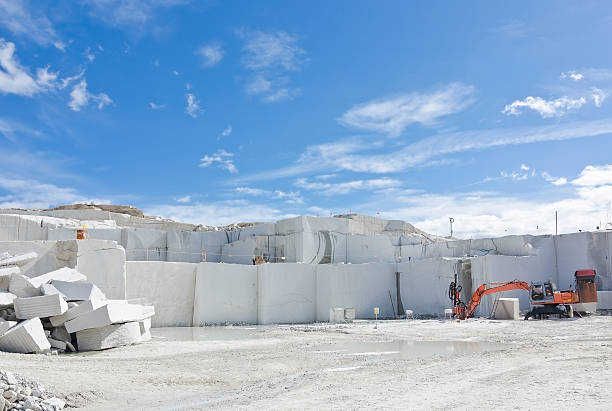Discovering the Rich Background and Lasting Practices of Granite Quarrying
As we stand on the precipice of revealing the complex tapestry of granite quarrying, a journey via time reveals not simply the physical act of extracting rock yet also the social and historical relevance woven right into the extremely textile of this method. From the ancient origins that laid the foundation for modern-day quarrying techniques to the lasting methods that are forming the future of this industry, each sculpt mark on granite surface areas tells a tale waiting to be discovered (granite quarries in south africa). The heritage of granite quarrying extends far beyond simple extraction; it is a testimony to human ingenuity, resilience, and the enduring appeal of this stunning rock
Ancient Origins of Granite Quarrying
Going back to ancient people, the technique of quarrying granite has actually been an essential part of human history and architectural improvement. The earliest proof of granite quarrying dates back to old Egypt, where massive pyramids and intricate sculptures were crafted from this resilient stone. The Egyptians used primitive tools to draw out granite blocks from quarries, showcasing the value of this material in their significant constructions.
Relocating forward in background, the Greeks likewise made considerable contributions to the quarrying of granite. The Greeks used granite in numerous building wonders, such as temples and statuaries, showing their skill in shaping and carving this hardy rock. The Romans further fine-tuned the strategies of quarrying granite, using innovative devices like blades and hammers to essence and form granite for their legendary structures.
Through the centuries, the method of quarrying granite has progressed, with modern-day innovations boosting effectiveness while preserving the timeless charm of this natural stone - granite quarries in south africa. From old human beings to contemporary building contractors, the heritage of granite quarrying proceeds to shape our globe
Advancement of Quarrying Techniques
The development of quarrying techniques has been marked by a continuous development towards greater performance and accuracy in drawing out granite. Early quarrying strategies included hand-operated labor with basic devices such as chisels, hammers, and wedges to extract granite blocks from the earth.
In even more current times, the advent of equipment transformed the quarrying sector, enabling quicker removal rates and enhanced efficiency. Technologies such as ruby wire saws, high-pressure water jets, and pneumatically-driven drills have become conventional in modern-day quarries, permitting specific cutting and decreased waste. In addition, innovations in computer-controlled equipment and 3D modeling have actually enhanced quarrying procedures, resulting in very little ecological impact and enhanced sustainability methods. As the demand for granite proceeds to climb, the evolution of quarrying techniques stays integral to conference market needs effectively and sustainably.
Cultural Importance of Granite
Granite holds a profound cultural importance across various civilizations due to its long-lasting visibility in building masterpieces and respected monuments. From the impressive pyramids of Egypt to the intricate carvings of the Angkor Wat temple in Cambodia, granite has actually been a product of selection for revealing magnificence and durability in cultural heritage. In ancient Rome, granite columns embellished his explanation holy places and public structures, signifying stamina and permanence. The social value of granite expands past its physical qualities; it symbolizes resilience, security, and timelessness, making it an icon of sustaining traditions and customs.

Sustainable Practices in Quarrying
In see this site the middle of the abundant background of granite quarrying and its cultural value lies a growing focus on sustainable practices within the industry. As ecological awareness and issues regarding source depletion have increased around the world, the quarrying industry has actually increasingly embraced sustainable approaches to lessen its influence on the atmosphere and surrounding neighborhoods.

Furthermore, improvement and rehab of quarry websites post-extraction are integral to sustainable practices. By recovering quarried locations to an all-natural or advantageous state, such as producing wild animals environments or leisure rooms, quarriers can counter the ecological footprint of their operations and contribute favorably to the local ecological community.
Legacy of Granite Quarrying
With a historical backdrop steeped in craftsmanship and commercial progression, what sustaining effect has granite quarrying left on the landscape of contemporary society? The legacy of granite quarrying transcends plain removal techniques; it has actually shaped architectural marvels, urban landscapes, and social heritage worldwide. The long lasting nature of granite has hop over to these guys made it a preferred selection for monoliths, structures, and infrastructure, standing as a testimony to the ability and creativity of quarry workers throughout generations.
Moreover, the financial impact of granite quarrying can not be ignored. The industry remains to supply employment possibilities and drive neighborhood economies in regions where granite removal is widespread. It has likewise stimulated technological developments in quarrying strategies and devices, resulting in extra reliable and lasting practices.
In regards to sustainability, the tradition of granite quarrying consists of initiatives to mitigate environmental impacts via improvement tasks and responsible resource administration. By balancing economic rate of interests with ecological stewardship, the sector strives to make certain that future generations can remain to gain from this long-lasting natural deposit.
Conclusion
